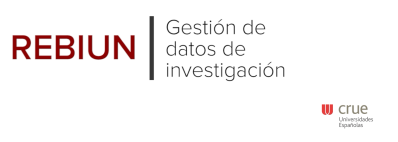The UN Sec urity Council facing the contemporary global balance of power
DOI:
https://doi.org/10.62407/rces.v3i3.70Keywords:
Security Council, balance of power, veto power, permanent members, international politicsAbstract
The Security Council is the cornerstone of the international security architecture. This body of the United Nations system has the central mission of ensuring the “maintenance of international peace and security.” Since its creation, it reflected the balance of power in the post-war period, endowing the victors of the Second World War with the status of permanent members with the power of veto in Council decisions, which ensured them a lasting leading role in the international system. During more than seven decades after the creation of the Security Council, the world has experienced profound transformations, giving rise to emerging powers that increasingly occupy a more significant role on the international stage. Faced with these new realities, the Security Council has remained unchanged, despite the numerous demands for reforms made by many States. When analyzing the economic, demographic and military indicators of the permanent members (United States, China, Russia, United Kingdom and France) in comparison with the member countries of the so-called G-4 (Brazil, India, Japan and Germany) it can be determined that the contemporary balance of power is not fully reflected in the current structure of the Security Council. These emerging powers should acquire permanent member status to increase the Council’s legitimacy and its ability to effectively represent global interests.
Downloads
References
Banco Mundial (2022). Informe Anual 2022: “Ayudar a los países a adaptarse a un mundo cambiante. Editorial Grupo Banco Mundial.
Bentham, J., (1962). The Handbook of Political Fallacies [El manual de las falacias políticas]. New York. Editorial Harper & Brothers. https://archive.org/details/handbookofpoliti00bent
Bridge, F., & Bullen, R. (2005). The Great Powers and the European States System 1814–1914 [Las grandes potencias y el Sistema de Estados Europeos 1814-1914]. 2da edición. Editorial Pearson Longman.
Cox, B. (2009). United Nations Security Council Reform: Collected Proposals and Possible Consequences [Reforma del Consejo de Seguridad de las Naciones Unidas: Propuestas colectivas y posibles consecuencias]. South Carolina Journal of International Law and Business: Vol. 6: Iss. 1, Article 4. https://scholarcommons.sc.edu/scjilb/vol6/iss1/4
Elman, C. (2005) Introduction: Appraising Balance of Power Theory [Introducción: El realismo y el equilibrio de poder. Editorial A New Debate.
Fitzgerald, A. (2000). Security Council Reform: Creating a More Representative Body f the Entire U.N. Membership. [Reforma del Consejo de Seguridad: creación de un órgano más representativo de todos los miembros de la ONU]. Editorial Pace International Law Review. https://doi.org/10.58948/2331-3536.1231
Foro Económico Mundial (2019). Índice de Competitividad Global. https://www3.weforum.org/docs/WEF_TheGlobalCompetitivenessReport2019.pdf
Garthoff, R. (1994). “Détente and Confrontation: American-Soviet Relations from Nixon to Reagan” [Detente y confrontación: Relaciones Americana-soviéticas desde Nixon a Reagan]. Editorial International Affairs. Volumen 64. https://doi.org/10.2307/2621507
Haas, E. (1953). The Balance of Power: Prescription, Concept, or Propaganda? [El equilibrio de poder: Receta, concepto o propaganda]. World Politics. Volumen 5. Pp 442-447. https://doi.org/10.2307/2009179
Mearsheimer, J. (2014). The Tragedy of Great Power Politics. [La tragedia de la polītica de las grandes potencias]. Esitorial New York: Norton. https://samuelbhfauredotcom.files.wordpress.com/2015/10/s2-mearsheimer-2001.pdf
Hoffman, S., & David, P. (1991). Rousseau on International Relations [Rousseau en las rela- ciones internacionales]. Editorial Oxford University. https://doi.org/10.2307/2623219
Hui, V. (1995). War and State Formation in Ancient China and Early Modern Europe. [La Guerra y la formación del Estado en la antigua China y la Europa Moderna]. Editorial Cambridge University.
Hurd, I. (2017). The Permissive Power of the Ban on War. [El poder permisivo de la prohibición de la Guerra]. European Journal of International Security. 1-18. https://doi:10.1017/eis.2016.13
Jervis, R. (1979). Deterrence Theory Revisited [Revisión de la Teoria de la disuasión]. World Politics. Pp. 289–324. https://doi:10.2307/2009945
Jervis, R. (1990). The Meaning of the Nuclear Revolution [El significado de la revolución nuclear].
Cornell University Press. https://doi:10.2307/1962861
Joseph S. Nye Jr. (1990). The Changing Nature of World Power [La naturaleza cambiante del poder mundial]. Political Science Quarterly, Vol. 105, No. 2. https://doi.org/10.2307/2151022
Krish, N. (2006). The Security Council and the Great Powers [El Consejo de Seguridad y los Grandes Poderes]. Oxford University Press. Pp 133-153. https://papers.ssrn.com/sol3/papers. cfm?abstract_id=2440758
Levy, J., y Vasquez, J. (2014). The Outbreak of the First World War: Structure, Politics, and Decision- Making [El detonante de la primera Guerra mundial: Estructura, Política y toma de decisiones]. Cambridge University Press. https://doi.org/10.1017/CBO9781107336995
Mahmood, F. (2013). Power versus the Sovereign Equality of States: the Veto, the P-5 and United Nations Security Council Reforms [Poder vs Igualdad soberana de los Estados: El veto, los P-5 y las Reformas al Consejo de Seguridad de la ONU]. Revista Percepciones. Volumen XVIII. http://sam.gov.tr/pdf/perceptions/Volume-XVIII/winter-2013/Fakiha_Mahmood.pdf
Marshik, A. (2005). The Security Council as World Legislator? Theory, Practice and Consequences of an Expanding World Power [¿El Consejo de Seguridad como Legislador Mundial? Teoría, Práctica y Consecuencias de un Poder Global en expansión]. New York University School of Law Press. https://dx.doi.org/10.2139/ssrn.871758
Mearsheimer, J. (1990). Back to the Future: Instability in Europe after the Cold War [Regreso al fututo: Inestabilidad en Europa despues de la Guerra Fría] International Security. Pp 5–56. https://doi.org/10.2307/2538981
Morgenthau, H. (2006). Politics among Nations: The Struggle for Power and Peace [Política entre las naciones: La lucha por el poder y la paz]. Boston: McGraw-Hill Higher Education. https://doi:10.1017/S0084255900051809
Paul, T., James, W, y Fortmann, M, (2004). Balance of Power: Theory and Practice in the 21st Century [Equilibrio de poder: Teoría y Práctica en el siglo XXI]. Stanford University Press. https://doi:10.1017/S1537592705920495
Programa Mundial de las Naciones Unidas para el Desarrollo (2022). Informe de Desarrollo Humano 2021-2022. https://hdr.undp.org/system/files/documents/global-report-document/hdr2021-22pdf_1.pdf
Rose, G. (1998). Neoclassical Realism and Theories of Foreign Policy [Realismo neoclásico y las teorías de la política exterior]. World Politics. https://www.jstor.org/stable/25054068
Rosecrance, R (2003). Is There a Balance of Power? Realism and the Balancing of Power: A New Debate [Hay un equilibrio de poder? El realismo y el equilibrio de poder: Un nuevo debate]. Prentice Hall. https://experts.illinois.edu/en/publications/realism-and-the-balancing-of-power-a-new-debate
Russett, B. Pearl Harbor: Deterrence Theory and Decision Theory [Pearl Harbor: Teoría de la Disuasión y teoría de la decisión]. Journal of Peace Research. Pp. 89-106. http://www.jstor.org/stable/423240
Schroeder, P. (1994) Historical Reality vs. Neo-realist Theory [Realistas históricos vs. Neo- realistas]. International Security. https://doi.org/10.2307/2539150
Schroeder, P. (1996). The Transformation of European Politics, 1763–1848 [La transformación de la política europea]. Oxford: Oxford University Press. https://archive.org/details/transformationof0000schr_m2h1
Schweller, R. (2006). Unanswered Threats: Political Constraints on the Balance of Power [Amenazas sin resolver: Limitaciones políticas al equilibrio de poder]. Princeton University Press. http://www.jstor.org/stable/j.ctt7rkxt
Sepúlveda, J., y Riquelme J. (2010). La reforma el Consejo de Seguridad: una mirada desde América Latina. Revista Nueva Sociedad No. 230. . Santiago, Chile. La https://static.nuso.org/media/articles/downloads/3738_1.pdf
Smith, Michelle D. (1993) Expanding Permanent Membership in the UN Security Council: Opening a Pandora’s Box o Needed Change? [Expansión de los Miembros Permanentes del Consejo de Seguridad de la ONU: ¿Abriendo una caja de Pandora o un cambio necesario?]. Penn International Law Review: Vol. 12: No.1, Artículo 6. http://elibrary.law.psu.edu/psilr/vol12/iss1/6
Snyder, J. (1991). Myths of Empire: Domestic Politics and International Ambition [Mitos del Imperio: Política doméstica y ambición internacional. Ithaca, NY: Cornell University Press. https://doi:10.2307/1964216
Spykman, N. (1942) America’s Strategy in World Politics: The United States and the Balance of Power [La estrategia Americana en el mundo politico: Estados Unidos y el equilibrio de poder] . Editorial Harcourt, primera edición. https://doi.org/10.4324/9781315082431
Vagts, A. (1979). The Balance of Power in International Law: A History of an Idea [El equilibrio de poder en el Derecho Internacional: La historia de una idea]. American Journal of International Law. Https://doi:10.2307/2200732
Walt, S. (1987). The Origins of Alliances [El origen de las alianzas]. Cornell University Press. http://www.jstor.org/stable/10.7591/j.ctt32b5fc
Waltz, K. (1979). Theory of International Politics [Teoría de la Política Internacional]. Reading, MA: Addison-Wesley https://archive.org/details/theoryofinternat00walt
Waltz, K. (2000). Structural Realism after the Cold War [Realismo structural después de la Guerra Fría]. International Security. Pp 5-41 http://www.jstor.org/stable/2626772
Downloads
Published
How to Cite
Issue
Section
License

This work is licensed under a Creative Commons Attribution-NonCommercial-ShareAlike 4.0 International License.



















